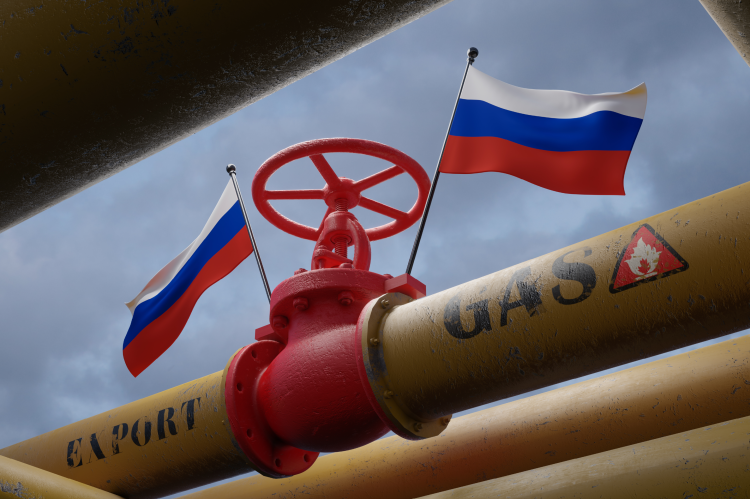Russia's Energy Ambitions Amidst Economic Sanctions: The Push for New Pipeline Projects

Russia plans to significantly accelerate its pipeline building activities this year as part of the plans for diversification of its oil and gas deliveries from the West to Asian and Middle East directions.
Russia has traditionally exported its oil and gas through pipelines, with the majority of the volume being intended for the EU market.
The decision of the EU to stop the import of oil and gas due to the ongoing military conflict in Ukraine, means that Russia will have to find alternative markets for its hydrocarbons. One of the most likely options involves the increase of exports to the Asia Pacific region and some countries of the Middle East.
Still, in addition to significantly lower demand for Russian oil and gas in both Asia Pacific and Middle East (compared to the EU prior to February, 24 2022), implementation of these plans is prevented by the lack of infrastructure, in particular pipelines.
According to recent statements, made by an official spokesman of Russia’s Minister of Energy, China, Pakistan and India are considered as potential options for the redirection of the Russian oil and gas initially intended for the European market.
Western sanctions have deprived Russia of access to technologies for building LNG plants, which means that further supplies of oil and gas via pipelines could be one of the ways for Russia to maintain its share in the global hydrocarbons’ export market.
New Projects in Development
Currently Russia has only one single large-scale pipeline in the Asian direction. The Power of Siberia exported 20 billion cubic meters of gas to China in 2022.
As the demand for Russian gas from China is growing, Russia and China are currently considering the building of a second "Power of Siberia" that will pass through the territory of Mongolia.
Construction is expected to start in 2024, with a commissioning in 2027–2028. The length of the pipeline will be 2,600 km, compared to 2,200 km of the existing Power of Siberia. 963 km of the new pipeline will pass through the territory of Mongolia. The raw materials for the new pipeline are expected to come from the Yamal Peninsula, specifically the Nadym-Pur-Taz region of the Yamalo-Nenets Autonomous Okrug.
As Igor Yushkov, an expert at the Russian Financial University and the National Energy Security Fund told in an interview with the Russian Vzglyad business paper, this is the most developed project in technical terms. The route has been studied and a feasibility study is ready. The only problem is the lack of a commercial contract with China.
Russia’s Deputy Prime Minister Alexander Novak has recently said, Russia expects to reach final agreements with China on Power of Siberia 2 in the near future.
According to Novak, the new gas pipeline will have a capacity of 50 billion cubic meters of gas per year, which will allow it to become a de facto replacement for the Nord Stream 2 gas pipeline, which has a capacity of 55 billion cubic meters per year, in terms of Russian exports.
In the meantime, representatives of the Mongolian government have recently said that in addition to a Russian gas pipeline there are some opportunities for the building of an oil pipeline within the territory of the country that could supply Russian oil to China.
A part of Russia’s plans is also the start of pipeline gas deliveries to India and Pakistan through Kazakhstan. This project is expected to be the replacement to the earlier announced Trans-Afghanistan Pipeline project. The project was intended to transport natural gas from the Galkynysh Gas Field in Turkmenistan through Afghanistan into Pakistan and then to India. The implementation of the Trans-Afghanistan Pipeline project is under serious question due to the inability to ensure safe gas supplies in the territory of Afghanistan.
Finally, hopes are put on the implementation of the recently announced ambitious project for the establishment of a gas hub in Turkey. A part of these plans is the building of new pipes, designed for transportation of 31.5 billion cubic meters as part of the already existing TurkStream routes through the Black Sea.
Severe Problems in the Russian Pipeline Industry
In general, the length of main pipelines in Russia is currently estimated at more than 250,000 km, most of which are pipelines of large diameter (1220 and 1420 mm) with a large length in transversal mode.
Illegal tappings to steal oil remain one of the major problems of the Russian pipeline sector. They pose a threat not only due to the loss of the oil itself, but also by oil pollution and fires. In the 1990s and 2000s, huge number of cases of such illegal tie-ins were recorded. Many of which existed for several years.
In the meantime, the lack of skilled personnel could be considered as another problem. This may prevent a more active development of the pipeline sector in Russia in years to come.
Since February, 24 2022 many skilled specialists have left Russia. While the country has good specialized higher education institutions, which teach and train the application of pipeline technologies, it will probably take time to prepare a new wave of high-qualified specialists, especially amid the current conditions.
Some analysts also expect, due to the current economic decline in Russia, caused by unprecedented Western sanctions, the industry to face the problem of underfunding. This can lead to the suspension of some important projects, particularly those, which involve building new pipelines and their commissioning.
In addition, there could be serious problems with the availability of technologies essential for the building of pipelines. Prior to February, 24 2022 most of these technologies were supplied to Russia from abroad.
